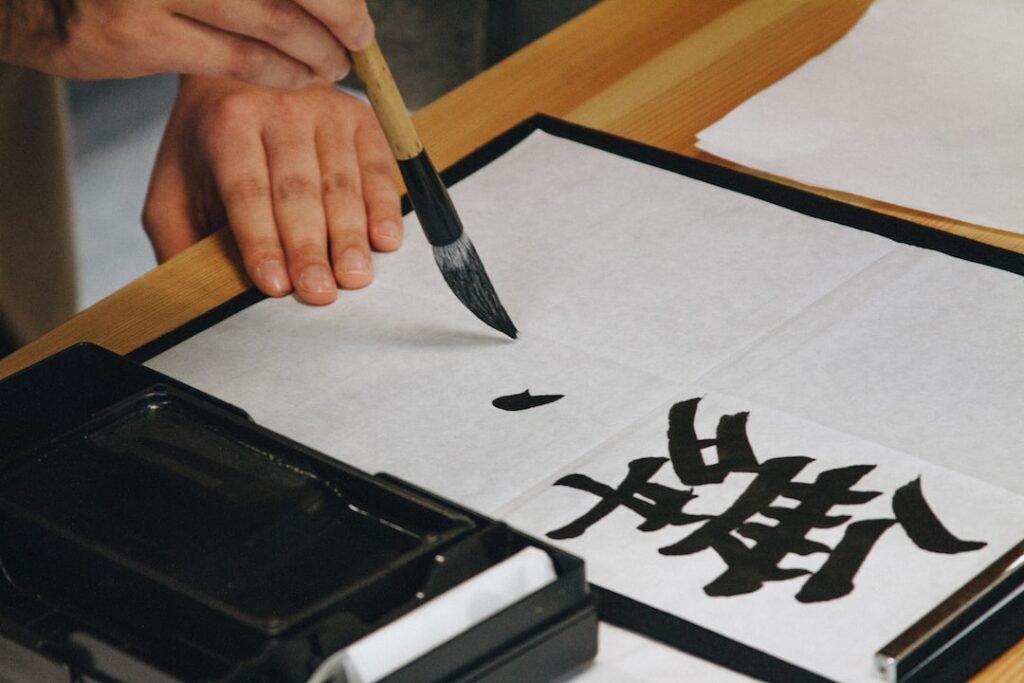Welcome to this blog post that aims to provide you with a comprehensive understanding of Chinese art and culture. In today’s globalized world, it is becoming increasingly important to have knowledge and appreciation for different cultures, and Chinese culture is no exception. By delving into the world of Chinese art, you will not only gain a deeper understanding of the rich history and traditions of China but also appreciate the significant influence it has had on the global art scene.
Table of Contents
ToggleKey Takeaways
- Chinese language and culture are deeply intertwined, making it important to understand both to fully appreciate Chinese art.
- Chinese art has a long and rich history, and its influence can be seen in art around the world.
- Key terms like “气qi,” “阴yin and 阳yang,” and “feng shui” are important to understand when studying Chinese art and culture.
- Chinese calligraphy is a highly respected art form that reflects the beauty and complexity of Chinese culture.
- Chinese ceramics, opera, literature, and festivals all offer unique insights into the rich cultural heritage of China.
Understanding the Importance of Chinese Culture
To truly appreciate Chinese art, it is essential to understand the historical and cultural background of China. China has a history that spans thousands of years, with a rich tapestry of dynasties, emperors, and cultural movements. From the ancient dynasties such as the Qin and Han to the more recent Ming and Qing dynasties, each era has left its mark on Chinese culture.
Chinese culture has had a profound influence on the world. From philosophy and religion to language and cuisine, Chinese culture has permeated various aspects of global society. The teachings of Confucius, for example, have shaped moral values and social norms not only in China but also in neighboring countries such as Japan and Korea. Chinese cuisine, with its diverse flavors and cooking techniques, has become popular worldwide. The spread of Buddhism from India to China and then to other parts of Asia is another example of how Chinese culture has influenced the world.
The Significance of Chinese Art in the Global Context
Chinese art has a long and illustrious history that dates back thousands of years. From ancient pottery and bronze artifacts to intricate calligraphy and delicate paintings, Chinese art showcases the creativity and skill of its artists. The development of Chinese art can be traced through various dynasties, each leaving its unique mark on the artistic landscape.
Chinese art has also had a significant impact on the global art scene. The influence of Chinese art can be seen in various art movements, such as Impressionism and Cubism, which drew inspiration from Chinese brushwork and composition. Chinese ceramics, with their exquisite craftsmanship and vibrant colors, have been highly sought after by collectors around the world. The popularity of Chinese ink paintings has also grown, with artists from different cultures incorporating elements of Chinese painting into their own works.
Key Terms for Chinese Art and Culture Enthusiasts
To fully appreciate Chinese art and culture, it is important to familiarize yourself with key terms that are commonly used in this field. Here are a few examples:
1. 风水Feng Shui: Feng Shui is the ancient Chinese practice of arranging objects and spaces in a way that promotes harmony and balance. It is believed to bring good luck and positive energy.
2. 气Qi: Qi is a fundamental concept in Chinese philosophy and refers to the vital life force or energy that flows through all living things. It is often associated with health, vitality, and spiritual well-being.
3. 阴阳Yin and Yang: Yin and Yang are opposing forces that are interconnected and interdependent. They represent the duality of nature and the balance between opposing elements such as light and dark, hot and cold, and male and female.
4. 道Taoism: Taoism is a philosophical and religious tradition that emphasizes living in harmony with the Tao, which can be translated as “the way” or “the path.” It encourages individuals to live a simple and balanced life.
Chinese Calligraphy: A Window into Chinese Culture
Chinese calligraphy is considered one of the highest forms of visual art in China. It has a long history that dates back thousands of years and has been practiced by scholars, artists, and emperors alike. Calligraphy is not just about writing; it is an art form that requires skill, precision, and a deep understanding of Chinese culture.
Calligraphy holds great importance in Chinese culture. It is seen as a way to cultivate one’s character and express one’s emotions. The strokes and brushwork used in calligraphy are believed to reflect the inner state of the calligrapher. Calligraphy is also closely tied to the practice of meditation and mindfulness, as it requires focus and concentration.
There are various techniques and styles of Chinese calligraphy, each with its own unique characteristics. Some of the most well-known styles include seal script, clerical script, regular script, running script, and cursive script. Each style has its own set of rules and conventions, but all share a common emphasis on balance, rhythm, and harmony.
The Art of Chinese Painting: Techniques and Styles

Chinese painting is another important art form that has a rich history in China. It is characterized by its use of brush and ink, as well as its emphasis on capturing the essence or spirit of the subject rather than its physical appearance. Chinese painting encompasses a wide range of subjects, including landscapes, figures, flowers, and birds.
Chinese painting has evolved over time, with different styles emerging during different dynasties. Some of the most famous styles include the meticulous style of the Tang dynasty, the freehand style of the Song dynasty, and the literati style of the Ming dynasty. Each style has its own unique techniques and characteristics, but all share a common emphasis on brushwork, composition, and the use of ink.
Techniques used in Chinese painting include dry brush, wet brush, splashed ink, and color wash. Dry brush technique involves using a dry brush to create fine lines and details, while wet brush technique involves using a wet brush to create bold strokes and washes of ink. Splashed ink technique involves flicking or splattering ink onto the paper to create texture and movement. Color wash technique involves diluting ink with water to create subtle shades and tones.
Appreciating Chinese Ceramics: History and Aesthetics
Chinese ceramics have a long and storied history that dates back thousands of years. From the delicate porcelain of the Song dynasty to the vibrant blue and white porcelain of the Ming dynasty, Chinese ceramics are renowned for their exquisite craftsmanship and beauty.
The history of Chinese ceramics can be traced back to the Neolithic period, with the production of simple pottery vessels. Over time, Chinese potters developed more advanced techniques, such as glazing and firing at high temperatures, which resulted in the creation of durable and aesthetically pleasing ceramics.
There are various types of Chinese ceramics, each with its own unique characteristics. Some of the most well-known types include celadon, white porcelain, blue and white porcelain, and famille rose porcelain. Celadon is known for its pale green color and subtle crackle glaze. White porcelain is prized for its pure white color and translucent quality. Blue and white porcelain features intricate designs painted in cobalt blue on a white background. Famille rose porcelain is characterized by its vibrant colors and detailed enamel decoration.
The aesthetics of Chinese ceramics are deeply rooted in Chinese culture and philosophy. The concept of wabi-sabi, which emphasizes the beauty of imperfection and transience, is often seen in Chinese ceramics. The use of natural materials, such as clay and minerals, also reflects a connection to nature and the natural world.
Chinese Opera: A Unique Form of Performing Arts
Chinese opera is a traditional form of performing arts that has a history dating back over a thousand years. It combines music, singing, acting, acrobatics, and martial arts to tell stories from Chinese history, mythology, and literature.
Chinese opera has its roots in ancient rituals and folk traditions. It was originally performed in temples and village squares as a form of entertainment and religious worship. Over time, it evolved into a highly stylized and sophisticated art form that is now recognized as one of the cultural treasures of China.
There are several types of Chinese opera, each with its own distinct style and characteristics. Some of the most well-known types include Peking opera, Cantonese opera, and Sichuan opera. Peking opera is known for its elaborate costumes, stylized movements, and high-pitched singing. Cantonese opera is characterized by its melodic singing and acrobatic stunts. Sichuan opera is known for its comedic performances and face-changing techniques.
Chinese opera plays an important role in Chinese culture. It is not only a form of entertainment but also a way to preserve and pass on traditional stories, values, and beliefs. It is often performed during festivals and special occasions, such as Chinese New Year and the Mid-Autumn Festival.
Chinese Literature and Poetry: A Rich Cultural Heritage
Chinese literature and poetry have a long and rich history that spans thousands of years. From ancient classics such as “The Book of Songs” to modern works by contemporary writers, Chinese literature showcases the depth and diversity of Chinese culture.
Chinese literature has been shaped by various historical and cultural influences. Confucianism, Taoism, and Buddhism have all played a significant role in shaping Chinese literary traditions. The teachings of Confucius, for example, emphasized moral values and social harmony, which are often reflected in Chinese literature.
Some of the most famous Chinese writers and poets include Li Bai, Du Fu, Su Shi, and Lu Xun. These literary giants have left a lasting impact on Chinese literature and continue to be celebrated for their contributions to the literary world.
Chinese poetry is known for its concise yet profound language and imagery. It often uses symbolism and metaphor to convey complex emotions and ideas. Traditional forms of Chinese poetry include shi (regulated verse), ci (lyric poetry), and qu (narrative poetry). Each form has its own set of rules and conventions, but all share a common emphasis on rhythm, rhyme, and tonal patterns.
Exploring Chinese Festivals and Traditions: Customs and Beliefs
Chinese festivals and traditions are an integral part of Chinese culture. They reflect the values, beliefs, and customs that have been passed down from generation to generation. Chinese festivals are often celebrated with colorful rituals, performances, and feasts.
Some of the most important Chinese festivals include Chinese New Year, the Mid-Autumn Festival, and the Dragon Boat Festival. Chinese New Year, also known as Spring Festival, is the most important festival in China. It is a time for family reunions, feasting, and honoring ancestors. The Mid-Autumn Festival is a harvest festival that celebrates the full moon and is often associated with mooncakes and lanterns. The Dragon Boat Festival commemorates the poet Qu Yuan and involves dragon boat races and the eating of zongzi (sticky rice dumplings).
Chinese festivals are steeped in customs and beliefs that reflect Chinese culture and values. For example, during Chinese New Year, it is customary to clean the house to sweep away bad luck and make way for good fortune. Red decorations are also hung to ward off evil spirits. During the Mid-Autumn Festival, families gather to admire the full moon and eat mooncakes as a symbol of unity and harmony.
In conclusion, learning about Chinese art and culture is not only a fascinating journey but also an important endeavor in today’s globalized world. By understanding the historical and cultural background of China, appreciating the significance of Chinese art in the global context, familiarizing yourself with key terms related to Chinese art and culture, exploring different art forms such as calligraphy, painting, ceramics, opera, literature, and poetry, as well as delving into Chinese festivals and traditions, you will gain a deeper understanding of the rich heritage and traditions of China.
Chinese art and culture have had a profound influence on the world, shaping various aspects of global society. By immersing yourself in the world of Chinese art and culture, you will not only gain a greater appreciation for the beauty and creativity of Chinese art but also develop a broader perspective on the world and its diverse cultures. So, let’s continue exploring Chinese art and culture and embrace the richness and diversity it has to offer.
Contact our head teacher, Chen Huimin, at info@lcchineseschool.com if you want to learn Chinese or have additional questions about our Chinese programs.
Sign up for a free trial class here.
Learn about our Internship Program in China.
Get free Chinese learning resources.
Learn about China’s 2024 Offical Holiday Schedule







